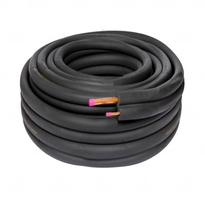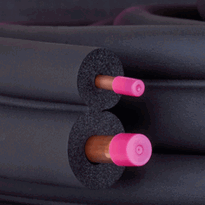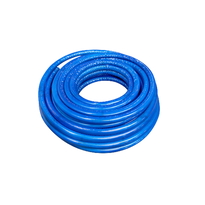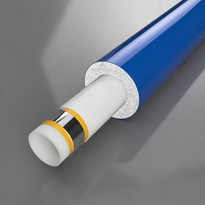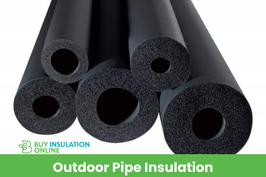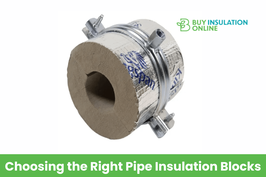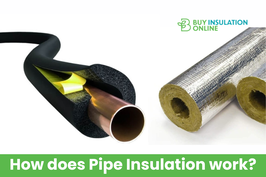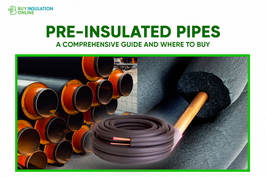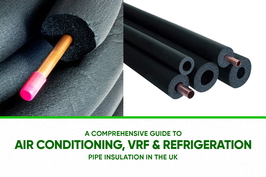Twin Pre Insulated Copper Pipes
Twin pre-insulated copper pipes consist of high-conductivity copper tubing paired with robust insulating layers, typically made of polyethylene or foam materials, to minimize heat loss and provide protection against environmental factors. The insulation features a double pre-insulation design, which simplifies installation and maintenance while extending the lifespan of the pipes by resisting corrosion and physical damage. These pipes are widely utilized in heating, ventilation, and air conditioning (HVAC), industrial, and geothermal applications, offering reliable thermal transfer and energy efficiency. Ongoing research and development continue to enhance their construction and optimize their performance for various applications across the UK.
Materials and Construction of Twin Pre Insulated Copper Pipes
The construction of twin pre-insulated copper pipes involves the careful selection of materials that optimize thermal performance, durability, and environmental resistance. Copper is chosen for its high thermal conductivity and resistance to corrosion, ensuring efficient heat transfer and longevity. The insulation typically utilized includes polyethylene (PE) or ethylene propylene diene monomer (EPDM), both materials with low thermal conductivity and resistance to UV rays, aiding in maintaining consistent insulation qualities over time. Copper's high cleanness (mg/m3) and quality control via eddy current testing contribute to its durability and performance. The outer layer is made of polyethylene, providing additional protection against environmental factors such as moisture and mechanical wear. These pipes can be manufactured with customized dimensions, including wall thickness and length, to suit specific system requirements. Additionally, some designs feature double pre-insulation, which facilitates easier installation and maintenance, especially in complex or varied applications. The use of customized dimensions allows for tailored solutions to meet diverse installation needs and system efficiencies.
Key Features and Design Benefits
Twin pre-insulated copper pipes offer several significant advantages, particularly in enhancing energy efficiency. Their design helps to minimize heat or cold loss during transmission, leading to reduced energy consumption and lower operational costs. Reducing heat transfer also contributes to better temperature control, supporting system performance and reliability. The specialized insulation acts as a protective barrier against corrosive elements, which extends the lifespan of the pipes and maintains their performance over time. This insulation also provides durability by absorbing shocks and preventing physical damage, ensuring the system remains reliable under challenging conditions. One of the key benefits is the ability to maintain stable temperatures within the system. This consistency ensures efficient operation, reducing the likelihood of leaks caused by thermal expansion or contraction. Additionally, these pipes facilitate simpler installation processes, which can contribute to lowering overall project costs. Their capacity to perform reliably in diverse environmental conditions, including environments with high moisture levels, makes them suitable for a wide range of applications. Proper insulation also enhances air tightness and overall system integrity, further boosting efficiency and longevity.
Common Applications and Environmental Considerations
Twin pre-insulated copper pipes are extensively used across various sectors due to their excellent thermal performance and adaptable design, making them suitable for applications that demand consistent temperature control and resistance to corrosion. Their widespread utilization includes heating, ventilation, and air conditioning (HVAC) systems, air conditioning units, industrial processes, geothermal energy transfer, and domestic hot water supplies. These pipes facilitate energy-efficient operation, minimise heat loss, and offer durability under demanding conditions. Some models are designed with corrosion-resistant outer casings, simplifying installation and enhancing longevity. Additionally, they are valued for their ease of installation and maintenance, which contributes to reduced operational costs over time.
Application Areas and Key Benefits
Application Area |
Key Benefits |
| HVAC Systems | Maintains refrigerant and water temperatures, reduces noise and vibration |
| Industrial Processes | Ensures consistent temperature stability, resists cleaning agents |
| Geothermal Energy | Minimises heat loss, maximises energy transfer |
| Domestic Hot Water Systems | Supports efficient thermal performance. |
| Environmental Impact | Decreases energy consumption, prolongs pipe lifespan, lowers maintenance costs |
Environmental Considerations
Implementing twin pre-insulated copper piping can significantly reduce energy consumption within building services and industrial operations. By providing reliable thermal insulation and resistance to environmental factors, these systems help decrease greenhouse gas emissions associated with energy production. Additionally, their durability reduces the need for frequent repairs or replacements, contributing to sustainability through resource conservation. Selecting pipes with corrosion-free casings not only extends service life but also minimizes environmental impacts linked to maintenance and waste. This durability, which stems from the use of high-quality materials like copper and polyurethane foam insulation, is largely resistant to corrosion and degradation, leading to longer-lasting performance and less environmental impact over time.
Conclusion
Twin pre-insulated copper pipes combine robust copper tubing with effective insulation layers, providing efficient thermal transfer and resistance to corrosion. Their construction ensures minimal heat loss, making them suitable for heating and cooling systems in a variety of environments.
The design offers advantages such as ease of installation, durability, and energy efficiency. Understanding the materials used and their applications enables informed selection and correct implementation within building infrastructure, helping to ensure reliable performance and compliance with safety standards.
